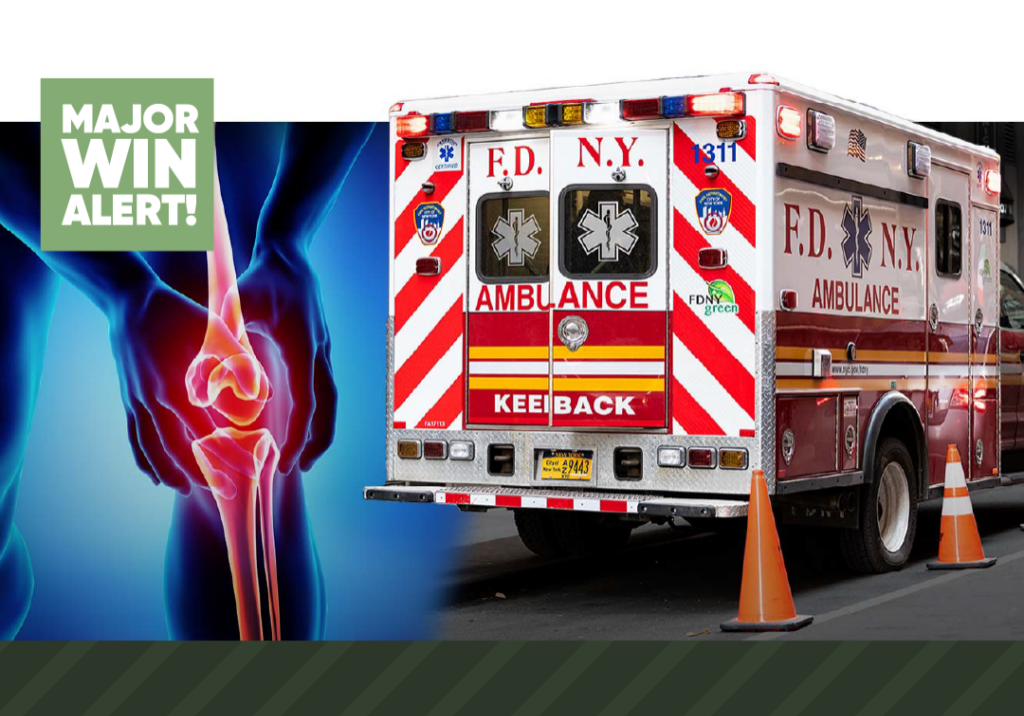Dear Valued Clients,
Many of you have shared with us your continued challenges with body creep in the construction space. In response to this challenge, we are pleased to share the following information on mitigating body creep within the court system.
What is Body Creep?
Body creep is a phenomenon that occurs in workers’ compensation when a case is subject to attempted body part expansions. After filing an initial workers’ compensation claim, the plaintiff or the plaintiff’s attorney, will file for additions to be included in the claim. These additions expand on and escalate the initial injury, seeking to relate subsequent symptoms or injuries requiring medical treatment to the claimant and increase compensation through ties to related general liability claims.
Why is This an Issue in Construction?
In New York state, when there is an accident on a construction job site, two types of claims can arise. The first type of claim is a workers’ compensation claim, which provides for lost wages and ensures the injured party receives treatment. The second type of potential case is a general liability (GL) claim. With a GL claim, there are several issues a plaintiff can pursue, including but not limited to:
- Pain and suffering
- Bodily injury
- Property damage
- Repair costs and legal fees
Because GL claims involve more issues, there is more potential for exposure and damage to the employer. The complexity of GL cases related to workers’ compensation claims in construction also means they take longer to settle and typically settle for more.
In summary: when a workers’ compensation case in construction is subject to body creep, the case almost always becomes more complicated and costly for the employer and insurer.
How to Spot Body Creep
A key indicator of body creep impacting a workers’ compensation case would be inconsistencies in the claimant’s report. Inconsistencies to look for include:
- Shifting timelines
- Injuries or body parts added to the injury report after-the-fact
- Changes to the story regarding the mechanism of injury
- Missing or altered medical reports
Any change or shift the plaintiff or their attorney makes to the claim or their testimony throughout the case should trigger concern for body creep. Because body creep can sneak up on a case quickly, attention to detail is vital when defending such a case. Attorneys who focus on report documentation and detail will be better positioned to defend against body creep.
Mitigating Body Creep
Identifying when a case is susceptible to body creep is only the first step in mitigating or minimizing this possibility in a case. Fortunately, there are other tactics construction owners, risk managers and attorneys can use, including:
- Documentation: When consulting with your attorney about a workers’ compensation case, provide them with documents such as the initial investigation report, onsite medical report, witness statements, investigation materials, videos/photos from the scene and the claimant’s initial recorded statement. Having documentation from every step of the process will allow your defense to recognize changes and inconsistencies that could lead to body creep.
Similarly for attorneys, it is important to document every change and inconsistency that occurs after gathering the initial reports. This documentation allows you to provide a judge with tangible evidence that changes were made. - Collaboration: It is vital to connect your workers’ compensation and GL attorneys quickly if you suspect body creep. While a workers’ compensation attorney may not be familiar with your GL case, cross collaboration is important for a strong defense. Your workers’ compensation attorney may have insights into the situation that your GL attorney may not have and vice versa. By connecting the two parties, you are expanding your resources to defend the case.
- Patience: Construction owners or insurers may be tempted to proactively secure an opinion on additional sites from an independent medical examiner (IME) as soon as those sites are added to the case. This has the potential to backfire. For example, if a claimant adds body sites to a case and a carrier gets an IME on the causal relationship before the Prima Facie Medical Evidence (PFME) finding has been shared, and the IME finds a causal relationship, it can make it difficult to make any other arguments finding the additional site not causally related. In this scenario, it is best to wait for specific directions from the judge requiring an IME.
- Safety First: Construction site safety is the best way to minimize the risk of body creep as well as any workers’ compensation claims. If a site is safe and employees are properly trained and fitted with PPE, there is less risk of injury or workers’ compensation claims, including those susceptible to body creep.
While accidents and subsequent claims are not completely avoidable, identifying cases that could be open to body creep and taking the steps above to prepare and defend against this phenomenon can help save construction owners and their insurers from costly and complicated cases.
Our goal at Jones Jones is to continually improve and provide you, our clients, with additional support and resources each day. This information sheet is one of the many ways we work to put you first. If you have questions about body creep, or if you are facing a workers’ compensation claim you are concerned may involve body creep, please connect with Managing Partner Sarah Thomas at sthomas@jonesjonesllc.com.












